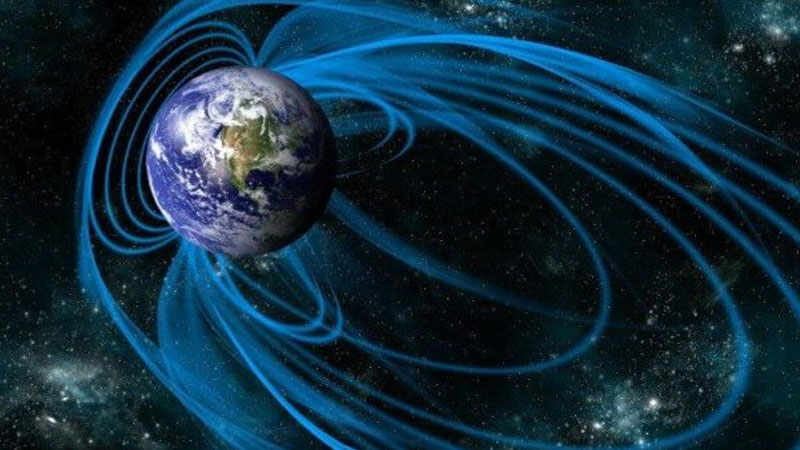
The Earth is surrounded by a magnetic field, a kind of invisible force that protects life from harmful solar radiation by deflecting charged particles. However, far from being constant, this field is constantly changing.
During a reversal, the magnetic field takes on a weaker and more complex shape. It can drop to 10% of its current strength and have both magnetic poles at the equator, or even the simultaneous existence of multiple magnetic poles “north” and “south”.
Geomagnetic reversals occur a few times every million years, on average. However, the interval between the reversals is very irregular and can vary up to tens of millions of years.
There can also be temporary and incomplete reversals, known as events, in which the magnetic poles move away from the geographic poles, perhaps even crossing the equator, and then return to their original locations.
The last total reversal, the Brunhes-Matuyama reversal, occurred about 780,000 years ago.
The last temporary reversal, the Laschamp event, occurred about 41,000 years ago. It lasted less than 1,000 years, and the actual change in polarity lasted about 250 years.
The change in the magnetic field during a reversal weakens its shielding effect from the Earth, allowing elevated levels of radiation over and above the planet’s surface.
If this were to happen today, the increase in charged particles reaching Earth would result in greater risks to satellites, aviation, and terrestrial electrical infrastructure.
Geomagnetic storms, driven by the interaction of abnormally large eruptions of solar energy with our magnetic field, give us a sense of what we can expect with a weakened magnetic shield.
In 2003, the so-called Halloween Storm caused blackouts in Sweden’s electricity grid, required the rerouting of flights, and disrupted satellites and communication systems.
But this storm was smaller compared to others in the recent past, such as the Carrington event of 1859, which caused auroras as far south as it was in the Caribbean.
The impact of a major storm on today’s electronic infrastructure is not fully known. However, any time spent without electricity, heating, air conditioning, GPS, or the internet would have a major impact on the planet, with widespread blackouts potentially resulting in an economic disruption of tens of billions of dollars per day.
And what happens to people?
In terms of life on Earth and the direct impact of a reversal on our species, we cannot definitively predict what will happen, since modern humans (Homo sapiens) did not exist at the time of the last total reversal.
Several studies have attempted to link past reversals with mass extinctions, suggesting that episodes of extended volcanism could be driven by a common cause.
We know that many animal species have some form of magnetoreception, which allows them to sense the Earth’s magnetic field, using this to aid in long-distance navigation during migration. But it’s unclear what impact a total reversal could have on these species.
What is clear is that early humans managed to survive the Laschamp event, and life itself survived the hundreds of complete reversals evidenced in the geological record.
Can we predict geomagnetic reversals?
A total reversal of the magnetic poles is “near.” The fact that the Earth’s field is currently shrinking at a rate of 5% per century has led to suggestions that the field may reverse in the next 2,000 years, but pinning down an exact date, at least for now, is very difficult.
Earth’s magnetic field is generated within our planet’s liquid core, by the slow churning of molten iron. Like the atmosphere and oceans, the way it moves is governed by the laws of physics.
We should therefore be able to predict the reversal by tracking this movement, just as we can predict the weather by looking at the atmosphere and the ocean.
The difficulties of predicting the weather, beyond a few days are widely known, despite the fact that we live inside the atmosphere, observing it directly.
Therefore, predicting movements in the Earth’s core is even more complicated, mainly because it is below 3,000 kilometers of rock.
Despite this, we are not completely blind: we know the main composition of the material inside the nucleus and that it is liquid. A global network of orbiting observatories and satellites is also measuring how the magnetic field is changing.
This, combined with numerical simulations and laboratory experiments to study the fluid dynamics of the planet’s interior, is developing our understanding at a rapid rate. Who knows, maybe we have a better idea of what to expect soon.


















